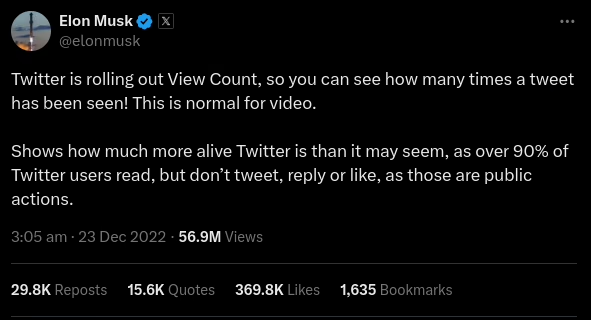Have you ever wondered how well your content is performing? Well, now everyone will be able to see exactly how it’s doing. In a move towards greater transparency, Facebook is making ‘views’ its primary metric for measuring content performance. Earlier this year, Instagram head Adam Mosseri revealed that “views” would become the key metric across all of its formats, allowing creators to track the same measure across Reels, Stories, photos, and even Threads.
Following suit, Elon Musk’s Twitter (now X) placed a similar emphasis on view counts, prioritising them over other metrics. Now, Meta’s Facebook platform is joining the trend, shifting focus to ‘views’ as its primary method of gauging content engagement.

What are Views?
It’s quite straightforward—just as the name suggests, ‘views’ refers to the number of times something has been seen. For Facebook’s new engagement tracking metric, it applies to views on Reels, videos, and photos.
In a recent announcement, Facebook revealed that ‘views’ will replace impressions. For non-video content, views will now count as the number of times content appears in someone’s feed, including repeat views.
To put it simply, if you see a post multiple times in a day, each time you view it will count as an individual action, unlike impressions, which only count once. This means you may start to notice that your view counts are higher than your previous impression counts.
‘Minutes Viewed’ Becomes the New KPI
Facebook is shaking things up with its new ‘views’ metric and an update to video analytics. Say goodbye to ‘watch time’ and ‘average watch time’—they’re being replaced by ‘minutes viewed’ and ‘average minutes viewed.’
The difference? Watch time tracks playtime down to the second, including replays, while minutes viewed rounds it to the nearest minute. Nonetheless, favourites like reach, 3-second views, 1-minute views, reactions, comments, and shares aren’t going anywhere.
This shift makes total sense as video content takes over on Facebook and Instagram. With views covering all formats, creators and brands can now see exactly how their content stacks up. Plus, tracking repeat views gives a better read on just how captivating your content really is.

For Meta, it’s all about simplifying things. A single, universal metric means advertisers get a clear, streamlined look at campaign performance.
What Marketers Need to Know
For marketers, it’s all about simplifying insights. With Views as the main metric, it’s now easier to compare performance across different content formats, providing a consistent way to measure success. This makes identifying what works, refining strategies, and maximising ROI much more straightforward.
The ability to track repeat views also gives deeper insight into content engagement. If viewers keep coming back, it’s a strong indicator that your content resonates—a valuable cue for fine-tuning your strategy.
With these improved metrics, marketers can focus on creating content that truly connects with their audience, driving more traffic, engagement, and conversions.
Bottom Line: While Meta’s updates offer new opportunities, they’re just one part of the bigger picture. These metrics could evolve again, so stay informed but avoid making drastic overhauls to your entire strategy—keep it adaptable.
